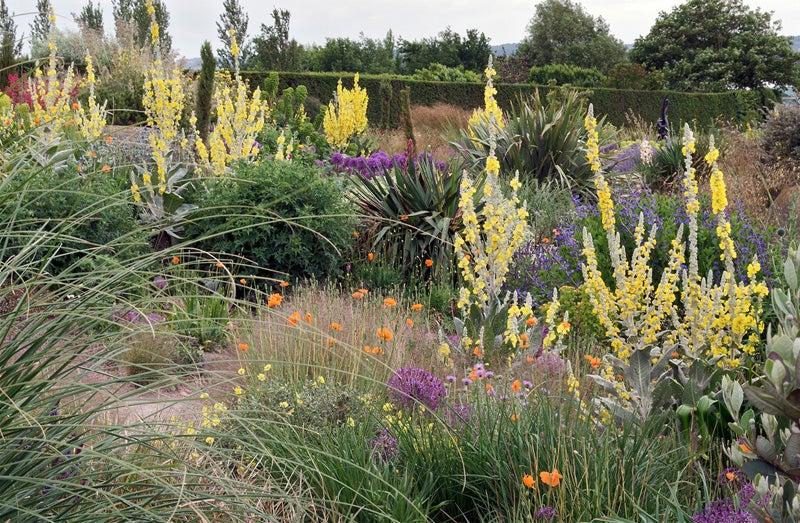Valentine’s gifts for your special gardener
ListenMike McGrath explains how to update the soil in your raised bed, the best way to save a river birch tree, tips for gardening in a California drought and Valentines gifts for the special gardener in your life. Plus: Amy Mawby from Tyler Arboretum takes us through turning sap into syrup.
Questions of the Week:
“I believe I have caught Mike in an error. Last year you recommended a Phalaenopsis (or ‘moth orchid’) as a Valentine’s Day present, and said that a plant with lots of buds still unopened on the stem might still be showing flowers in July. I took your advice and bought a plant for my wife that only had a couple of open flowers and a lot of buds still on the stem. You were wrong: We had flowers opening up through mid-September! This seems especially impressive, because I generally can’t make anything grow—in the yard or in a pot—so thank you for your suggestion.”
— John in Washington, DC
“I want to thank you for your tip on giving a Butterfly Orchid instead of roses for Valentines Day. I found one at a local Florist, and had it sent to my wife Joyce at her office. It was a BIG hit!! New blooms just kept opening up!”
— Grampa Jim, Washington D.C.
See Valentine’s Day gift ideas for the gardener in your life »
Highlights from show for February 8, 2014:
From a hay bed to a vegetable garden
Steve from Hershey, Pennsylvania knows exactly where he wants to plant his raised bed vegetable garden this spring. The only problem is that it’s currently seeded with perennial hay! Steve harvested the hay this fall and called Mike to ask about how to convert this hay bed into a thriving garden. Mike suggests that Steve create a stale seed bed by tilling up the soil, chopping down any young weeds that sprout, and covering the planting area with cardboard before he builds his raised beds. “In about seven to ten days you’ll get your weeds coming up … use the sharpest hoes … they’re like razor-blade hoes, they actually have replaceable heads like razor-blades. Get one of those, get a bunch of blades and as soon as we get to the ten-day two week period, slice their little heads off right at the soil line! And that generally is enough to steal all the energy from any plant.” After completing this process, Steve’s plot will be all ready to go.
Saving a white birch tree
Cynthia from Cary, North Carolina got some bad news about the river birch in her yard: its roots have invaded her sewer service line. When she calls Mike to see if there is any way to both keep this lovely, healthy tree and prevent future damage to her pipes, Mike says, “I would not remove that beautiful tree. The river birch is absolutely one of my favorite trees, a great four-season interest tree, the bark alone makes it a tree worth keeping … These trees do have somewhat aggressive roots, but as in the case of bad police work the wrong suspect has been identified. The culprit is not the tree. The culprit is the pipe!” Mike thinks a poor-quality or incorrectly installed pipe may have sprung a leak that beckoned the river birch’s roots. He gives Cynthia some pointers for installing better pipes and keeping costs down. If the job is done correctly, Mike thinks Cynthia’s tree can stay exactly where it is.
Pancake breakfast at Tyler Arboretum
Mike speaks with Amy Mawby, Director of Public Programs at Tyler Arboretum in Media, PA. The arboretum will be tapping their maple trees for syrup on February 22nd, 2014 to show how maple syrup is derived and how it is actually made. Amy came to our studio to give us a little background on this sweet delicious topping, which dates back to the Native Americans who used hot rocks to heat up the syrup. Tyler Arboretum will of course be providing an all-you-can–eat pancake breakfast to sample some pure maple syrup in the best way possible.
Gardening during the California drought
Brad from San Diego, California wants to water his container garden as efficiently as possible. With widespread drought in California water conservation is a major concern. Mike recommends that all gardeners confronting these issues consult Save Three Lives, by Robert Rodale for an extensive overview of water harvesting techniques. Mike advises Brad to be extra careful in choosing and filling containers. “In San Diego with containers you need solid sides for your containers, you need them to be thick and water holding … My suggestion is the old school no bare soil make sure you have a nice cooling two-inches of mulch on the surface of your container soil to hold the moisture in it, otherwise you’re just wasting your time. No unglazed terra-cotta or other pots that wick their moisture into the atmosphere, otherwise you’re wasting your time.” Mike also explains a slow method of watering that will allow Brad’s plants really use the water he gives them.
— This week’s post was written by Marissa Nicosia, You Bet Your Garden intern
WHYY is your source for fact-based, in-depth journalism and information. As a nonprofit organization, we rely on financial support from readers like you. Please give today.




